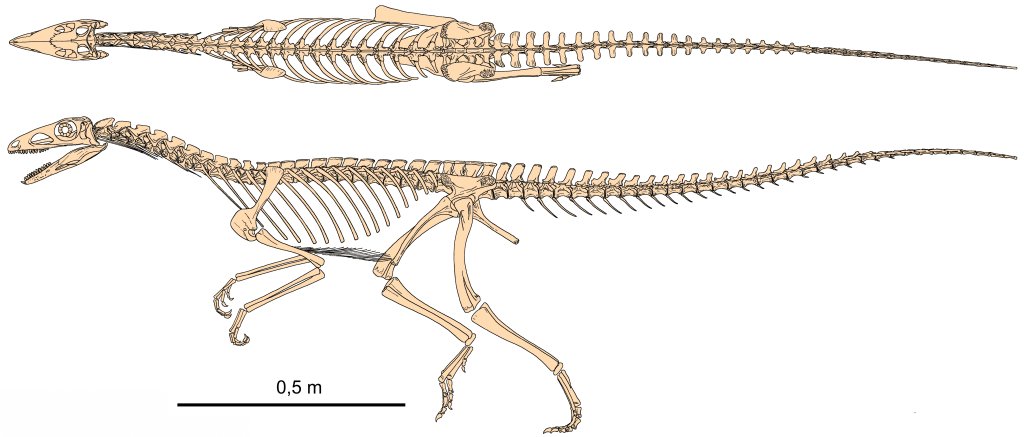Evolutionary Geochronology Research Group
Description of the Group:
The research group examines various aspects of reconstructing evolutionary processes based on the fossil record. One of the main research areas is the biogeography and evolution of the skeleton in Cretaceous dinosaurs from the Gobi Desert and early squamates. A second branch of their research focuses on early primates and lagomorphs. All of these projects utilize Computed Tomography as one of their primary methods.
They also study Triassic ecosystems (252-201 million years ago) based on excavations in the Holy Cross Mountains, Silesia, Tunisia, and Greenland. Another topic of their research is the relative contributions of biotic interactions (e.g., parasitism) and abiotic factors (e.g., climate) in driving large-scale patterns in the evolution of life. For these analyses, they use data from fossilized molluscs and helminths, trace fossils, and palaeopathologies to conduct quantitative studies.
Their current project focuses on the impact of global warming periods and extinction on parasite-host interactions and diseases.
They are interested in key transformations in the evolution of vertebrates and their parasites, as well as studying the ecological and biogeographical context of these evolutionary events. Diverse research methodologies are applied, ranging from phylogenetics and computed tomography to microscopy and quantitative applications. Excavations are organized in the Holy Cross Mountains, Silesia, Tunisia, and Greenland.
Research Interests:
- Phylogenetics;
- Palaeoecology;
- Anatomy;
- Biogeography;
- Evolution.
Research Equipment:
| Equipment Name | Contact Person / Room Number | |
| 1 | Pressi Mecatome T202 – Precision micro-cutter for cutting samples with a set of saws and coolant. | Maciej Moczyński / Phone: 26 560 /Room 1.48 |
| 2 | Small photographic studio – The studio consists of a Fomei cs-1070 tabletop and column, two Fomei Led Slim 15w LED lamps and a Sigma A 24-35 mm f/2 DG HSM Nikon lens with a Nikkon camera | |
| 3 | 3D scanner – SMARTTECH3D with calibration boards, cables and a tripod | |
| 4 | DELL Precision 5820 – Workstation with a set of programs for visual processing | |
| 5 | Keyence VHX-7000 – Modern light microscope with filter set, polarizer for transmitted light, console and control unit | |
| 6 | Critical Point Dryer CPD E3000 – Biological sample drying system for electron microscopy | |
| 7 | IKA 775 rotary vacuum evaporator – With HB ECO S099 bowl | |
| 8 | Polsonic Sonic 9 ultrasonic cleaner – working chamber size 30x29x5 cm | |
| 9 | Franz M1 electromagnetic separator – Rock material separation set |
About the Team Leader:
Dr Mateusz Tałanda defended his PhD Thesis about the early evolution of lizards at the University of Warsaw under the supervision of prof. Jerzy Dzik.
He did his post-doc at the University College London (United Kingdom). Author and co-author of over 20 research articles in international journals like Nature, PNAS, and Acta Palaeontologica Polonica.
He received a prize from the Faculty of Biological and Agricultural Sciences of the Polish Academy of Sciences (20th Nov. 2023), for the best research achievement of the year, entitled “Discovery of early evolution of Squamata based on fossils”. Dr Tałanda is mainly interested in the evolution of reptiles, Triassic ecosystems in general, and biogeography.
Significant Achievements:

The most famous discovery of our research group relates to a proto-dinosaur Silesaurus opolensis, found at Krasiejów near Opole in rocks dated about 230 million years old. It is the best-studied species among early members of the dinosaur lineage. Illustrations and information about this specimen can be found in most handbooks about vertebrate palaeontology and publications about dinosaur origins.
